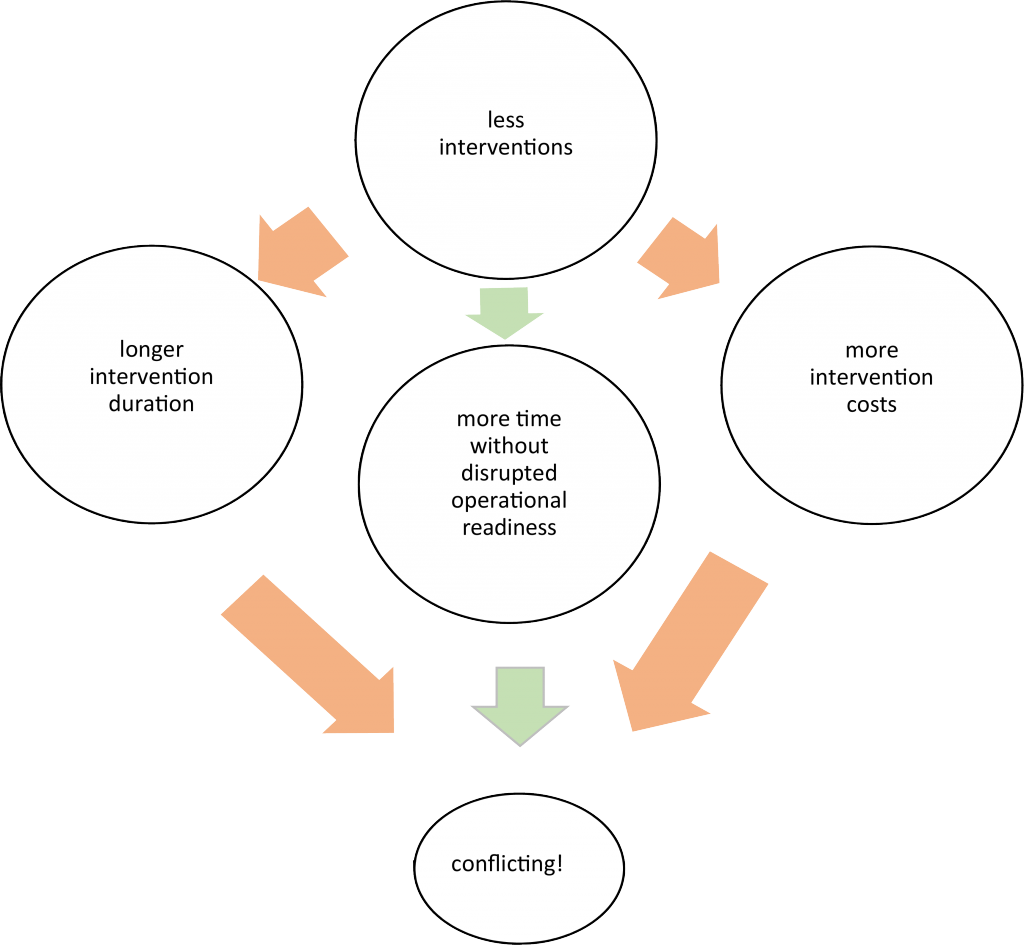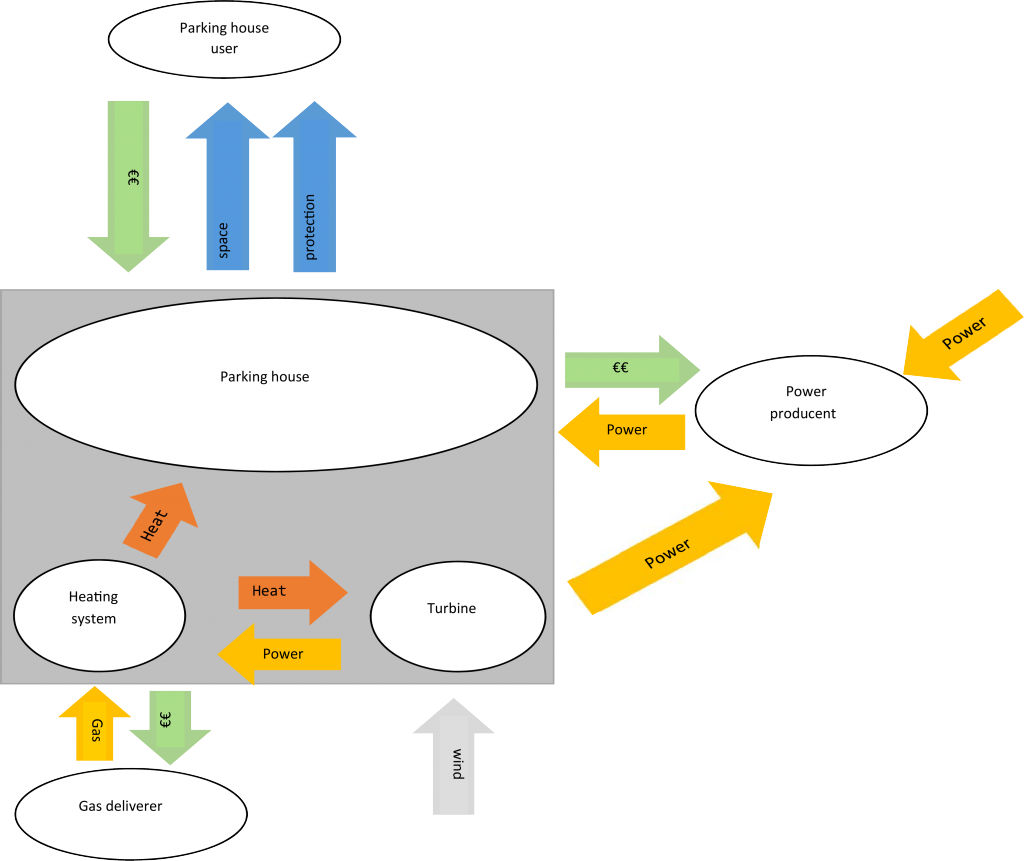The three different civil engineering systems are a heating system, a mulit-storey car park and a wind turbine and are introduced on each sub-page.
A multi-storey car park offers parking space for cars and, above all, protection against the weather. If the car park has security guards or a video surveillance system, it also protects against theft and vandalism. For safety it is necessary that the traffic routes are well lit and easy to drive. This includes sufficient drainage of moisture and a functioning system that prevents ice on the ramps. All of this requires electricity for the staff rooms, security guards and technical rooms. For this you also need a functioning heating system. A heater can also be used for the ramp system.
Electricity is also generally required for the pump and the boiler.
The electricity can be obtained from a wind turbine. It makes sense here to use it yourself with an increase by external electricity. The electricity has to be transported which will create a minor loss of electricity.
If the turbine is serviced, external electricity must be used by the parking garage and the heating system. This is associated with higher costs.
If the parking garage is serviced, the heating system should continue to be used as the people working on the maintenance need their rooms. Also electricity needs to be provided continously as the construction workers need power for their machines and light.
If the heating system is serviced, parts of the parking garage cannot be used. The line system must be replaced every 20 years. It makes sense to do this in combination with the parking garage.
There are other connections within the subsystems. An extension of the maintenance frequency is associated with higher costs and a longer duration of the interventions because additional components are worn out.

The opposite applies to the shortening of the maintenance frequencies, which cost less and have a shorter execution time.
